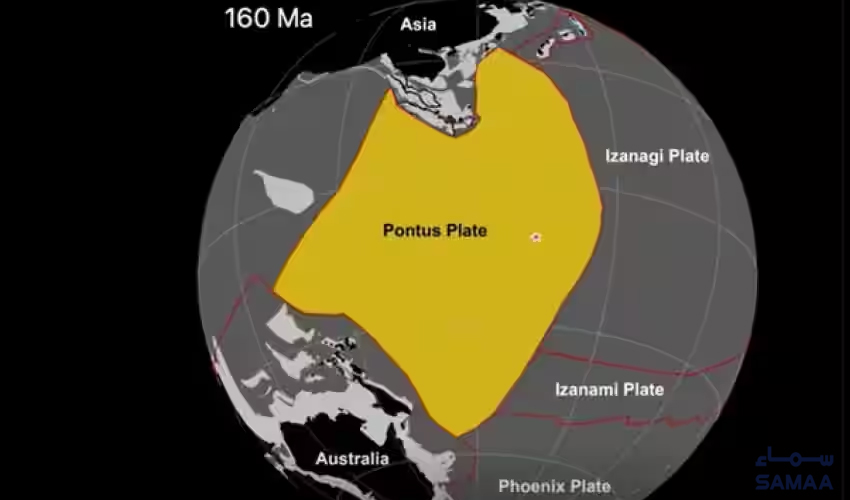A remarkable discovery by scientists has unveiled the existence of an ancient tectonic plate, the Pontus plate, in Southeast Asia, which had seemingly vanished from the Earth's surface over 20 million years ago. These plate fragments were identified in the South China Sea near Borneo Island, shedding light on a fascinating chapter of Earth's geological history.
The Pontus plate was once a colossal landmass spanning an estimated 15 million square miles, which is roughly a quarter of the size of the entire Pacific Ocean. Geological experts believe that this tectonic plate was originally a part of Earth's crust during the era of the supercontinent Pangaea. However, over millions of years, it was gradually drawn beneath the Earth's surface through subduction, a process driven by gravitational forces from a neighboring tectonic plate.
This submerged plate earned its name, the "Pontus plate," due to its location beneath an ancient ocean known as the Pontus Ocean. The revelation of this long-lost geological entity has left the scientific community both astounded and intrigued.
Suzanna van de Lagemaat, a doctoral candidate from Utrecht University in the Netherlands, made this groundbreaking discovery while studying rock formations in northern Borneo. "It's surprising to find remnants of a plate that we just didn't know about at all," she shared, emphasizing the sheer unexpectedness of their findings.
Press release!@Suzannavdl's PhD research yielded a nice surprise: the reconstruction of the Pontus Plate that we predicted 11 years ago based on tomography. And now it rolled out of her reconstruction 🤠.https://t.co/rNUOM8oazK@UUGeo @UUEarthSciences pic.twitter.com/3hXVeSx334
— Douwe van Hinsbergen (@vanHinsbergen) October 9, 2023
Initially, the researchers believed they were dealing with remnants of a known lost plate. Still, magnetic laboratory research on the rocks ultimately revealed their origins to be further north and attributed to a different, previously unknown plate, the Pontus.
This discovery validated a prediction made by the scientific team approximately a decade ago. Their prediction materialized when they uncovered fragments of these old tectonic plates hidden deep within the Earth's mantle earlier in the month. The researchers meticulously reconstructed the lost plates by combining fieldwork with extensive investigations spanning regions from Japan to Borneo, the Philippines, New Guinea, and New Zealand mountain belts.
These areas represent one of the most intricate and complex plate tectonic regions on our planet. In addition to the South China Sea near Borneo, remnants of the Pontus plate were also found in Palawan, an island in the Western Philippines, offering a more comprehensive view of this newly revealed geological relic.
Moreover, this groundbreaking research implies the existence of a unified plate tectonic system stretching from southern Japan to New Zealand, possibly in operation for at least 150 million years. This revelation represents a significant advancement in our understanding of Earth's geological history and the intricate movements of its tectonic plates.


























